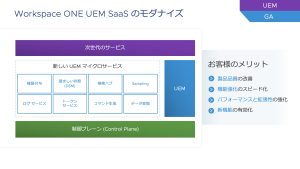The companies I work with at Tanzu by Broadcom are constantly looking for better, faster ways of developing and releasing quality software. But digital transformation means fundamentally changing the way you do business, a process that can be derailed by any number of obstacles. In his recent video series, my colleague Michael Coté identifies 14 reasons why it’s hard to change development practices in large organizations. In this companion series of blog articles, we’re exploring each of those topics in more depth, providing advice on how you can address them in your business.
Today, let’s look at topic no. 13: Five checks for executives.
Five checks for executives in a digital transformation
Digital transformation is not just about adopting new technologies. It’s also about changing the way you operate and the way your team works. As an executive, you play a crucial role in leading and supporting the transformation. Here are five checks that you should perform regularly to ensure that your transformation is on track and delivering value.
Check 1: Be flexible, and learn from feedback
As a leader, it is crucial to embrace flexibility and adaptability, especially during the initial stages of any transformation. Instead of adhering to rigid plans, remain open to learning from feedback, and be willing to adjust your strategy accordingly. In the words of David Rogers, author of The Digital Transformation Playbook, digital transformation is not a one-time project or a fixed set of best practices; it is an ongoing process of learning and adaptation.
Furthermore, it is essential to actively listen to your team and other stakeholders, valuing their input and opinions. They possess valuable insights and will likely have suggestions that can enhance your approach and way of working. Encourage experimentation, testing, and iteration in your solutions, embracing both successes and failures as opportunities for growth.
Always remember that transformation is a journey rather than a destination.
Check 2: Engage with a broad set of stakeholders
As a champion for change, it’s vital that you meet and collaborate with a wide range of stakeholders, beyond just your direct reports. Your goal should be to understand the impact of change from multiple angles and build relationships that will help your team deliver.
Having regular and direct updates with customers to hear their feedback and needs is not only a great way to show your support of the transformation and the team involved, but it can give you valuable insights into the business problems your customers are facing and how you can help resolve them.
By engaging with a diverse group of stakeholders, you can build trust, alignment, and collaboration across the organization. You can also identify and mitigate any potential risks, challenges, or opportunities that might arise from the transformation. It is highly recommended that you establish a relationship with incident/compliance managers as early as possible to seek their support, address any concerns, and lay the groundwork to be able to amicably resolve any future issues that might hinder the transformation.
Check 3: Spend time with your customers
One of the most important aspects of digital transformation is customer-centricity. Understanding the challenges that those in the business are facing and what positive impact that transformation can have is vitally important. Not only will this give you the opportunity to steer the transformation in the right direction, but you should be able to clearly articulate the real-world positive impact that the transformation is having within the business.
You should spend as much time as possible with your customers to understand their function, the problems they face day to day, and what concerns they have regarding change. In my experience, you should approach these conversations from the perspective of learning, through a lens of both curiosity and empathy. As I discussed in a previous article, transformation without belief is a waste, and it’s important to remember that people approach and experience change very differently.
By spending time with your customers, you can validate your assumptions, discover new insights, and measure the impact of your transformation. You can also create a customer-centric culture in your team and organization to ensure a focus on delivering value first and foremost.
Check 4: Define and track relevant metrics
As your understanding of problem space improves, you should always be thinking about what metrics you can use to ensure the team stays on the right path and can best demonstrate success. In the early phases of the project, that’s likely going to focus around scope and project progression. As you move forward, you’ll want to think more about how the transformation is positively affecting stakeholders. It’s important that you are able to communicate improvements in terms of business factors. For example, how does an increase in productivity or a decrease in error frequency relate to company revenue or customer satisfaction?
Digital transformation requires ongoing investment. By defining and tracking relevant metrics that can be communicated in the language of the business, you’ll be able to monitor the progress, outcomes, and value of your transformation. You’ll also be able to communicate the results and benefits to your stakeholders and celebrate the achievements of your team.
Check 5: Empower your team, and delegate decisions
In the early phases of a project, you might feel it necessary to be a primary decision maker. But once you’ve narrowed down the scope of what is necessary and your confidence increases, you should be looking to empower those working on the project; spend more of your time solving roadblocks, anticipating future problems, and laying the groundwork for future phases. There’s great benefit in delegating decisions to the delivery teams that have day-to-day familiarity with stakeholders and the software.
You should also encourage your team to take ownership and accountability for their work. Give them the autonomy, resources, and support they need to make decisions and deliver value. Foster a culture of trust, collaboration, and learning within your team and across the organization.
By empowering your team and delegating decisions, you’ll be able to unleash their potential and creativity. You’ll also be able to focus on the strategic and visionary aspects of your role as an executive.
Conclusion
Digital transformation is a complex and challenging endeavor, but it’s also a rewarding and exciting one. As an executive, you have a unique opportunity and responsibility to lead and support the transformation. By performing these five checks regularly, you’ll be able to ensure that your transformation is on track and is delivering value to your customers, your team, and your organization.
To learn more, check out our ebook Mindsets and Tactics for New Leaders of Software Teams. And read about other common digital transformation bottlenecks we’ve encountered and how to overcome them:
- Security: Securing Your Environment with Tools Before Rules
- Compliance: Making Compliance a Feature, Rather than Friction
- Tech Debt: 5 Ways to Cure Your Tech Debt Crisis
- Platform Engineering: Platforms as a Superpower
- CI/CD Bottlenecks: The Power of a Path-to-Production Workshop
- Doing Too Much
- Bottom-up Change Doesn’t Work
- Skill Gaps: How to Solve the Skills Problem
- Empowerment without Clarity Is Chaos
- Transformation without Belief Is a Waste
- Crusties Who Are Reluctant to Change
- All Talk and No Tools







